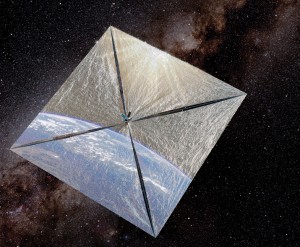
MIT scientist, Daniel Nocera, claims he has created an artificial leaf that simulates photosynthesis to generate electricity using just sunlight and water — reputedly doing so 10 times more efficiently than a real leaf.
The artifical leaf is said to operate at 76% efficiency (compared to around 10% efficiency in existing solar panels)
Placing the artificial leaf it in a single gallon of water in bright sunlight could produce enough electricity to supply a house in developing countries with its daily electricity requirement, Nocera has claimed.
Sources:
technewsworld.com
geeksaresexy.net
M.I.T SPECTRUM




















